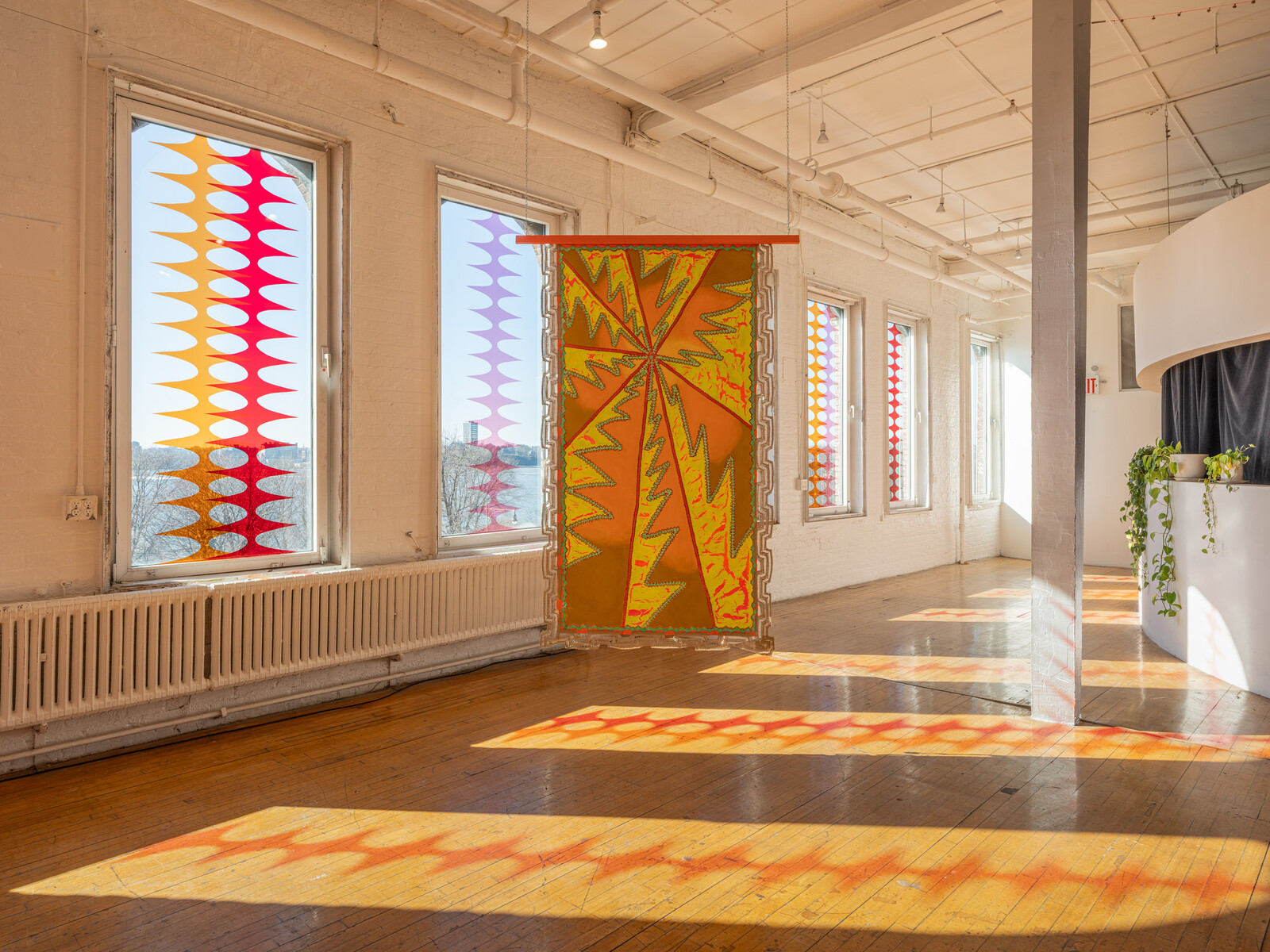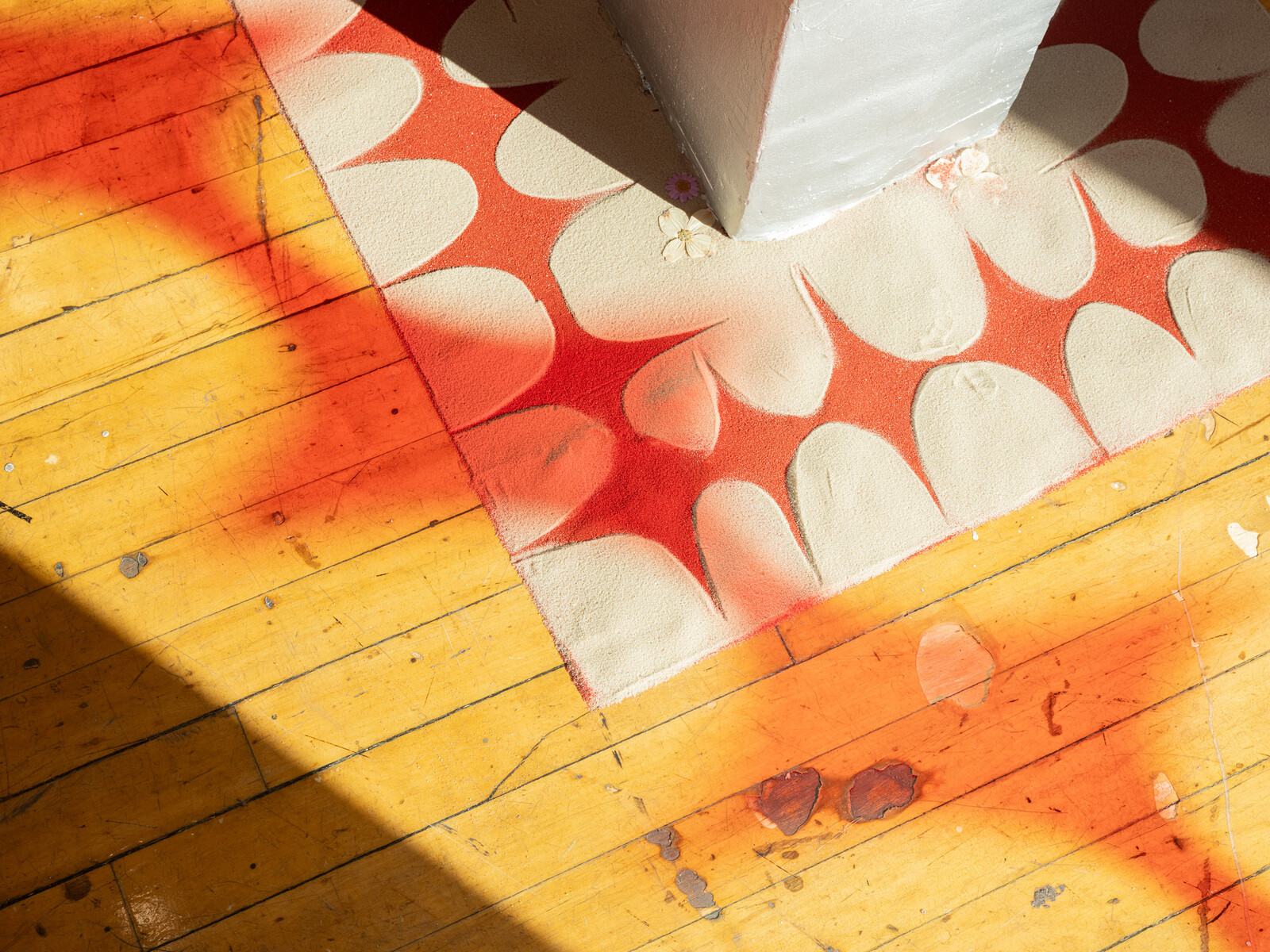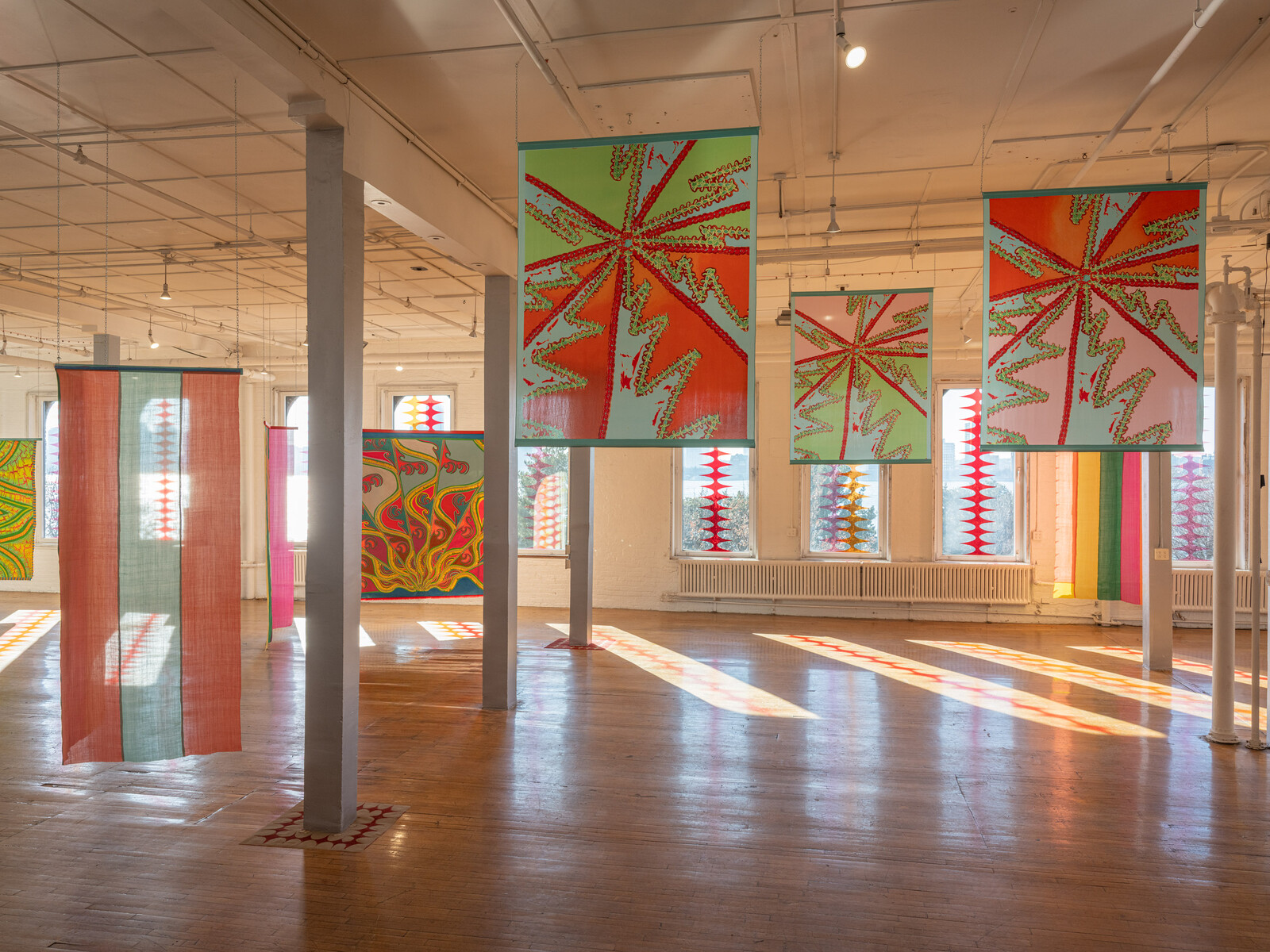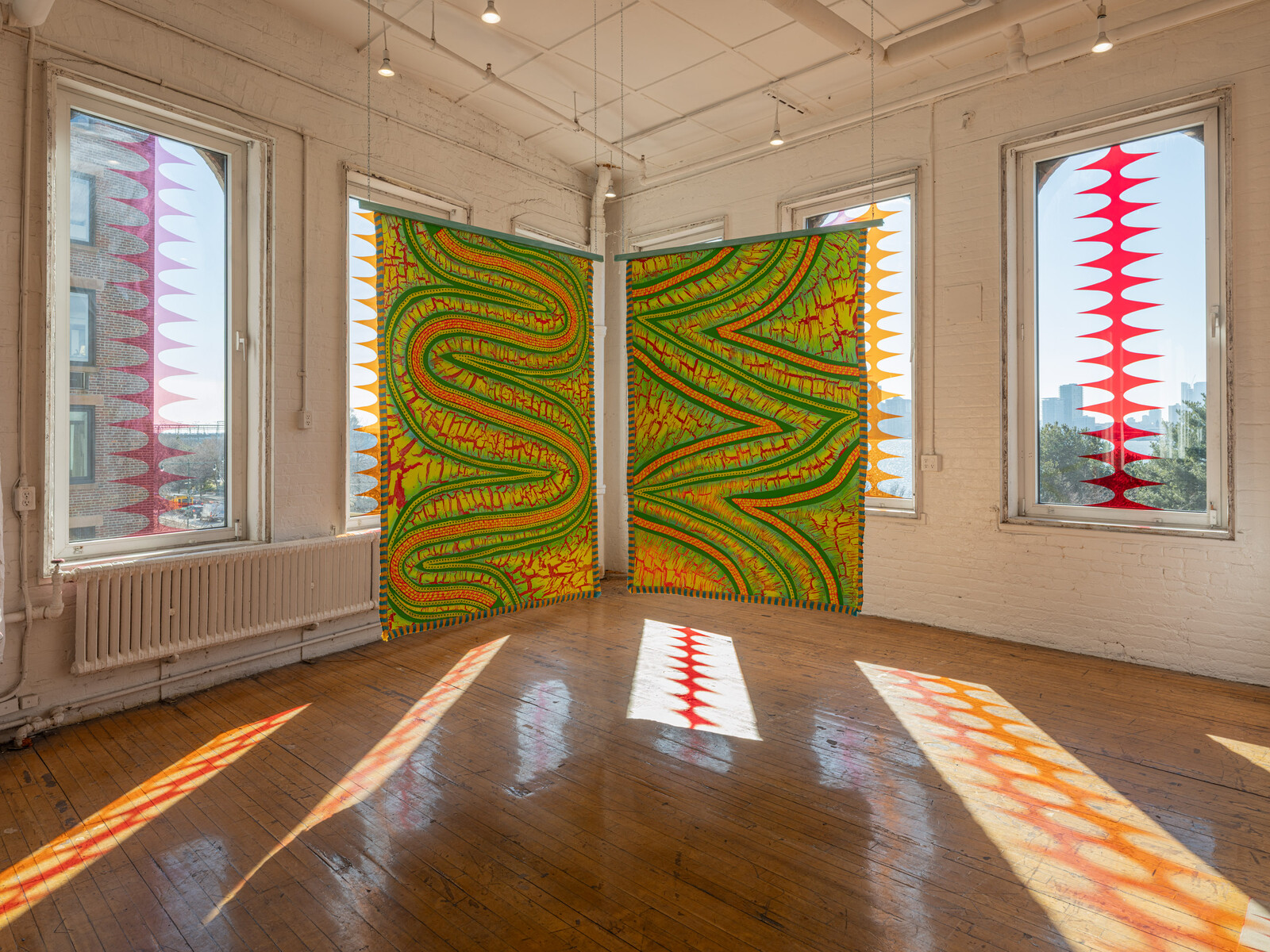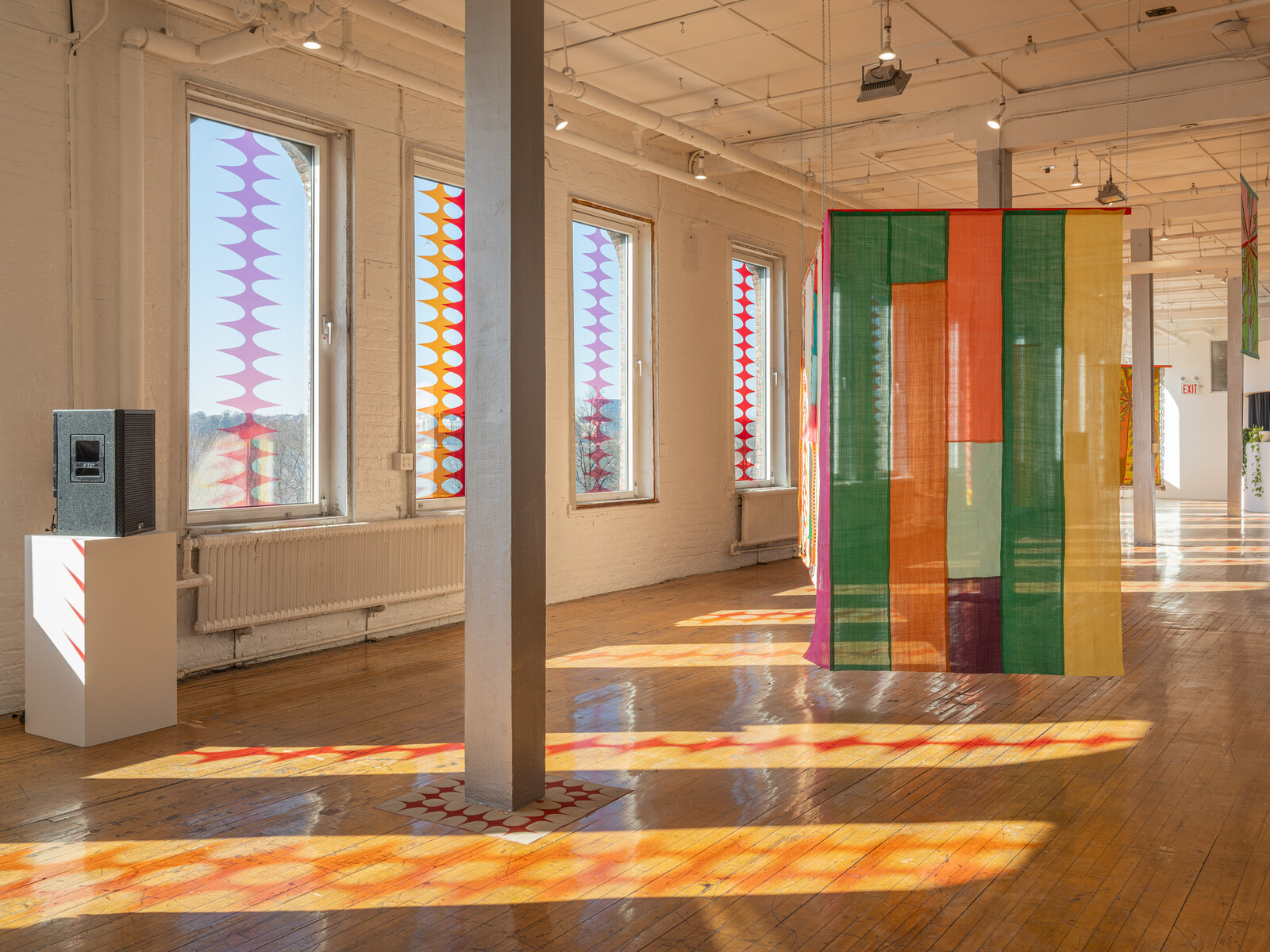Identities are constructed around borders that are themselves porous: identities not only border other identities, but ecologies, species, and objects as well. What is sometimes described as intersectionality might also be understood as interdependence: the vast network of relations—from microbiomes, to political economies, to geographies—in which any human subject is deeply enmeshed. In her work as both a visual artist and musician, Lisa Alvarado challenges the imposition of boundaries, whether between sight and sound, between Western traditions of abstract painting and Mexican textiles, or between home and displacement.
Born and raised in the border region of San Antonio, Texas, Alvarado had earlier Mexican American, landowning family members deported during the 1929–36 Mexican Repatriation, some of whom returned to the United States as migrant laborers. She studied painting as an undergraduate at the School of the Art Institute of Chicago in the early 2000s and experienced the city’s jazz and experimental music scenes, eventually joining Natural Information Society (led by Joshua Abrams), which self-describes as creating “long-form psychedelic environments informed by jazz, minimalism and traditional musics.” Contributing to this “psychedelic” quality are the series of paintings that Alvarado began producing for the band’s performances. Depending on the size of the stage, sometimes one is included as a backdrop, and sometimes three or four are installed around the musicians.
At the Kitchen, a mixture of twelve freestanding paintings and textile works surround the middle of the space. (All works in the exhibition are titled Shape of Artifact Time followed by a sequential number; all are from 2024 or 2025.) Alvarado paints on canvas without stretchers so that the works can be rolled up and travel with Natural Information Society, and this exhibition is designed to accommodate two performances by the band, including one at the opening. Generally larger than a human body and meant to be walked around, Alvarado’s paintings feature sweeping curves and vaguely biomorphic and geological forms with fabric and fringe sewn into them. At the Kitchen, most of the paintings and textiles are displayed perpendicular to each other, and their echoing patterns and colors create a net of interrelations across the exhibition space. Works constructed with dyed blocks of sewn linen tilt more toward textiles, while the abstractions lean toward paintings, although the intention is to confuse classificatory systems. Three pieces made with archival ink on charmeuse suspended high from the ceiling radiate splotchy lines from a small circle near their centers.
While Alvarado’s work is frequently talked about in terms of liminal spaces between conceptual categories and artistic disciplines, the paintings also aim to manifest a transfer of energy and connection, breaking down boundaries, borders, and rigid categories, whether aesthetic or sociological. This is art as a process of mestization. Her fluid abstractions range from the organic to the mandala, almost always in vivid colors, especially reds and greens. The forms that repeat within and between paintings undergo constant modulation, much the way, in fact, Natural Information Society makes music. Yet history and its figurations are also represented in four photocollages installed on a low wall that combine black-and-white images of Alvarado’s family members from around the time of Mexican Repatriation. Here, representation renders visible what threatens to disappear, whereas abstraction in the main body of Alvarado’s work effaces the individual for something larger, whether tradition, spirituality, or the communal.
Alvarado’s paintings are visually seductive and materially intriguing, but they function best as an aggregate along with sound, natural and artificial light, and bodies moving around them. To see one in isolation would be to overemphasize abstract forms and material surfaces. Their ideal setting may in fact be what has been created at the Kitchen: surrounded by twenty south- and west-facing upper-floor windows to which Alvarado has affixed wavy, columnal burgundy gels, with afternoon and sunset light filtering through the paintings and textiles, two strings of bells tinkle, a site-specific sound piece plays on speakers, colors and configurations shift as viewers walk through the space, and various inner and outer worlds mingle.
This scene was further activated at the exhibition’s opening. While the art world—and non–art world—touts immersive experiences as the ultimate viewer (and consumer) experience, this has been mostly limited to slightly gimmicky digital projections, increasingly augmented by AI. Immersive for Alvarado and her collaborators means Natural Information Society playing a single song that lasted over an hour, with its own version of minimalist jazz and drone mixing with the hum of traffic from the West Side Highway, as the sunlight deepened and faded to the swells of Alvarado’s harmonium and the collaborative sounds created by other members of the band. Yet it wasn’t all “natural” and analog, as aspects of the music and lighting were electronically manipulated, further augmenting the translations and transmissions.
